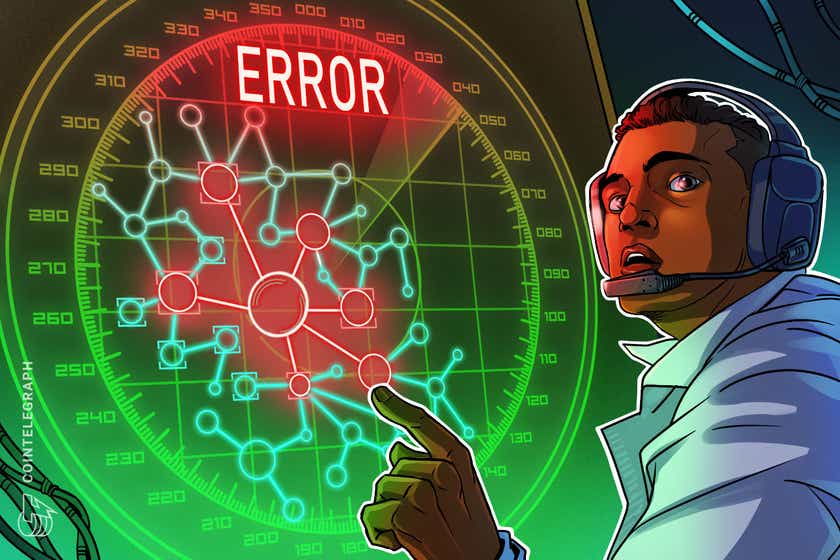Never mind FTX — Fine arts institutions should still onboard to blockchain
The reality is that blockchain technology can still deliver substantial benefits, particularly within the fine arts. And for those who have been paying attention, 2022 has been a year of incredible normalization for nonfungible tokens (NFTs). Simply put, major institutions across various sectors have dipped their toes into Web3.
In November, Instagram announced that creators would soon have the functionality to make and sell NFTs. Apple similarly announced in September that NFTs could be sold in its App Store. Put together, that’s 3.5 billion people (2 billion from Instagram and 1.5 billion from the App Store).
Although each of these major institutions has its own quirks and rules, most notably the fees associated with using their platforms, the reality is that they are still some of the largest platforms in the world and will drive the onboarding of millions into Web3.
Related: From the NY Times to WaPo, the media is fawning over Bankman-Fried
It’s not just the technology sector. Starbucks and JPMorgan Chase both recently partnered with Polygon, one of the leading blockchain infrastructure companies, to fuel their services. While both partnered for different reasons — Starbucks to launch a loyalty program and JPMorgan Chase to facilitate financial transactions — the diversity of legacy enterprises onboarding onto the blockchain in serious, multimillion-dollar ways signals that something is up.
It is far too easy to throw the baby out with the bathwater and dismiss crypto just because of the fraudulent activity of bad actors, such as FTX and Terra, in recent days. But they presented problems with governance, not crypto or blockchain. Any technology can be abused and misused: Surely we would not want to hold fiat currency or any other asset classes to the same standards?
The fine arts, particularly the performing arts, have not yet recovered from nearly two years of cancellations and theater closures — nor have its artists. Moreover, the sector was already facing difficulty and decline in the lead-up to 2020. Artists’ wages have been on the decline, not even taking into account the higher costs they incur as a result of changes in the price of education and the additional costs they incur simply to do their job (e.g., voice lessons and auditions).
These are serious challenges the sector must grapple with if it wants to shift its financial and social trajectory. But even beyond the fiscal challenges it faces, a new generation of consumers is emerging with an appetite for different types of experiences, ranging from digital assets that they can buy and display in their social network to the authenticity and increased personal connection they want to have with the brands they buy from. Just consider a recent survey by Roblox of 1,000 Gen Z community members: 73% of the zoomers said they spend money on digital fashion, 66% said they were excited to wear brand-name virtual items on Roblox, and nearly half looked to digital fashion brands and designers for clothes that they can experiment with that they would not have otherwise worn in real life.
That does not mean consumers want purely digital experiences, but rather that digital becomes a complement to in-person goods and services. And that should come as a surprise — that’s the way music already is with the combination of streaming and in-person concerts. The differences here are the expansion of digital asset types and the fact that the asset lives on the blockchain rather than a centralized customer relationship management software.
Second, the labor market for artists has been struggling. While detailed data on artists is hard to gather, my research using data from the United States Census Bureau’s American Community Survey finds that real wages for performing artists have declined over the past decade. International evidence indicates that a similar pattern holds true across countries.
What’s worse, artists have been absorbing more costs over these years too, meaning that their disposable income has suffered. Although many artists may stick with their craft because of a love for what they do, the sector will eventually implode if the business model does not change.
These factors substantially reduce artists’ bargaining power when they negotiate contracts. This is why they are generally forced into giving up their intellectual property when signing with a record label — giving up their creative content in favor of a larger audience. But sadly, these agreements rarely deliver the finances they promise.
Related: 5 tips for riding out a downbeat market this holiday season
Therein is the opportunity for fine arts institutions: using digital assets to simultaneously expand their base of consumers and revamp the way that artists get remunerated so that they are financially empowered.
NFTs are just a means for establishing a line of communication between consumers and institutions with a digital paper trail around the intellectual property that ensures remuneration based on the agreed-upon terms.
While many fine art galleries are already beginning to work with digital artists, other types of fine arts institutions, like theaters, could also use NFTs.
The easiest place to start is with ticketing: An opera house could offer tickets as NFTs, and patrons could perform the transaction in a similar way with an email and password, but now have the NFT live on the blockchain.
That offers a handful of advantages, such as the ability for patrons to showcase their support for the opera on their digital wallet, while reducing fraud and/or piracy.
Furthermore, using NFTs establishes a two-way line of communication between holders and the institution, allowing an opera house to give attendees additional perks (e.g., photos from the event).
Web3 is not a panacea. It’s just another technology, but it offers the potential to fundamentally transform the way we interact and transact with one another.
It is easy to get hung up on all the new language and buzzwords, but an effective implementation of Web3 architecture ultimately should look and feel just as easy as what you’re used to. The only difference is that now the technology lives on the blockchain.
Fine arts institutions have much to gain from the strategic adoption of these technologies. It just requires an open mind and a willingness to put in the hard work with the right partners.
Christos Makridis is the chief operating officer and co-founder of Living Opera, a Web3 multimedia startup anchored in classical music, and a research affiliate at Columbia Business School and Stanford University. He also holds doctorate degrees in economics and management science and engineering from Stanford University.
This article is for general information purposes and is not intended to be and should not be taken as legal or investment advice. The views, thoughts and opinions expressed here are the author’s alone and do not necessarily reflect or represent the views and opinions of Cointelegraph.









